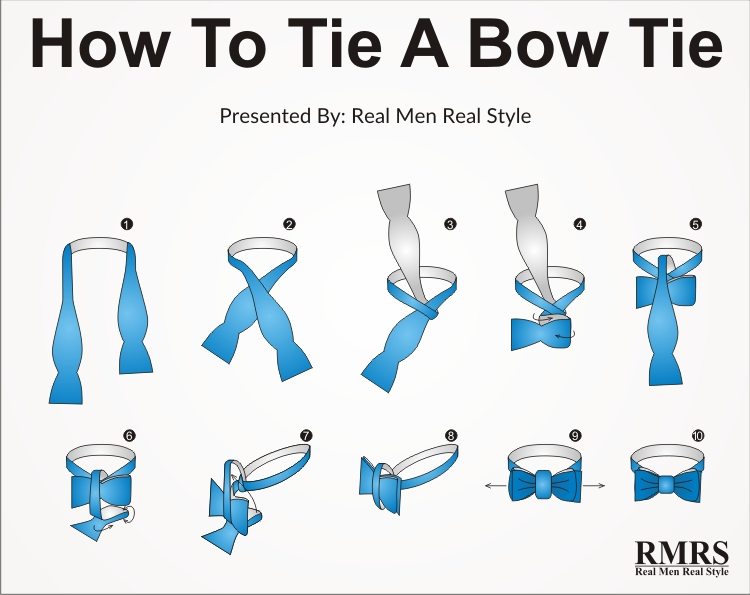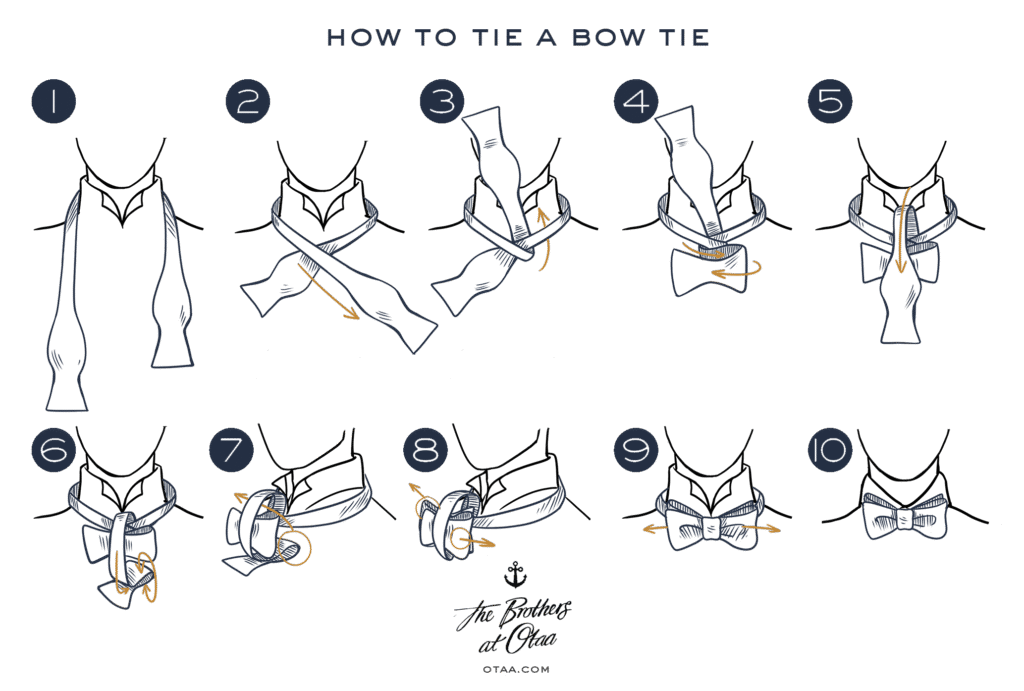In a world increasingly focused on practicality and efficiency, the seemingly archaic art of tying a bow tie retains a surprising relevance. From formal events to personal style statements, the bow tie continues to be a symbol of sophistication and attention to detail. Whether you’re attending a wedding, a business meeting, or simply aiming to elevate your personal aesthetic, mastering the bow tie knot is a valuable skill. This guide dives deep into the intricacies of bow tie tying, providing a comprehensive approach for beginners and experienced wearers alike. It explores the various knotting techniques, common challenges, and the broader context of bow tie etiquette in modern society. Understanding the historical context and contemporary relevance of this classic accessory will make this process more rewarding.
Beyond its aesthetic appeal, tying a bow tie effectively demonstrates a level of meticulousness and attention to detail. This meticulous process, often underestimated, showcases a commitment to presentation and a deeper appreciation for style. In today’s world, where digital communication often overshadows personal interactions, the act of tying a bow tie offers a tangible connection to tradition and craftsmanship, a small but impactful gesture that elevates the wearer’s presence.

This guide will provide a step-by-step approach, ensuring that you can confidently tie a bow tie for any occasion. We’ll delve into the different methods, comparing their ease of use and suitability for various situations. We’ll cover potential difficulties and offer troubleshooting tips to help you perfect your technique. Ultimately, this guide aims to empower you to confidently wear a bow tie, knowing that you can execute the knot with precision and style.
Understanding the Fundamentals of Bow Tie Knots
Choosing the Right Bow Tie
The first step in mastering the bow tie knot is choosing the right bow tie. Consider the fabric, size, and overall style to ensure a comfortable and aesthetically pleasing fit. A well-fitting bow tie will significantly improve the final look.
Fabric Considerations
Different fabrics will require varying levels of care and attention during the tying process. For example, silk bow ties often require more delicate handling than those made from polyester.
Understanding the Different Bow Tie Knots
Various bow tie knots exist, each with its own nuances and levels of complexity. This guide will focus on the Windsor and the Four-in-Hand, two of the most popular and versatile options.
The Windsor Knot
Known for its classic and elegant appearance, the Windsor knot is a popular choice for formal occasions. It tends to be more structured and requires more practice to achieve the perfect shape.
The Four-in-Hand Knot
This knot is generally considered easier to learn than the Windsor knot, offering a more streamlined and casual aesthetic. It’s well-suited for less formal settings and is a great starting point for beginners.
Step-by-Step Guide to Tying a Bow Tie
The Windsor Knot
The Windsor knot is a prominent style, typically used in formal settings. This involves more steps compared to other knots, but the resulting look is often worth the effort.
Steps
- Place the bow tie around your neck, with the wide end hanging down.
- Bring the wide end up and over the narrow end.
- Cross the wide end over itself, then bring it down and under the narrow end.
- Shape and adjust the knot to create the desired symmetry.
The Four-in-Hand Knot
The Four-in-Hand knot is a more casual and slightly simpler knot, well-suited for semi-formal events.
Steps
- Position the bow tie around your neck.
- Cross the wide end over the narrow end, then bring it down.
- Bring the wide end up and through the loop.
- Shape the knot to achieve the desired symmetry.
Troubleshooting and Common Challenges
Difficulty in Shaping the Knot
Achieving a symmetrical bow tie knot takes practice. Experiment with different techniques and knot positions to find the method that works best for you.
Tips
- Use a mirror for visual guidance.
- Practice regularly to refine your technique.
- Consider using a bow tie knotting tool for added support.
Knots that are Too Tight or Too Loose
Proper knotting depends on how you manipulate the bow tie’s fabric. Adjusting the tension and the positioning will help you avoid this common issue.
Additional Tips and Tricks
Beyond the fundamental knots, various tips can enhance your bow tie-tying experience.
Using a Bow Tie Knotting Tool
A bow tie knotting tool offers support in shaping the knot and can expedite the process.
Maintaining a Bow Tie’s Appearance
Proper care is crucial for maintaining the bow tie’s condition. Store it appropriately and clean it when necessary.
Summary
Mastering the bow tie knot involves understanding different styles, practicing the steps, and addressing potential challenges. This guide has provided a comprehensive overview of various knots, including the Windsor and Four-in-Hand, offering detailed steps for each. Troubleshooting common issues like knot symmetry and tension is also key.
Choosing the right fabric and using tools can aid the process. Proper maintenance also ensures the bow tie’s longevity. By following the provided guidance and practicing consistently, you can confidently tie a bow tie for various occasions.
Frequently Asked Questions (FAQs)
What is the best bow tie knot for a formal event?
For formal events, the Windsor knot is generally preferred due to its structured and elegant appearance. It often conveys a more refined and traditional image.
How do I prevent my bow tie knot from slipping?
Proper knotting technique is key. Ensure each step is executed correctly and adjust the knot’s tension to secure it firmly. Using a knotting tool can also aid in preventing slippage.
How do I choose the right size bow tie for my neck?
The bow tie should comfortably fit around your neck, not be too tight or too loose. A well-fitting bow tie will ensure the knot sits smoothly and won’t create an awkward appearance. Measure your neck circumference to determine the appropriate size.
What are some common mistakes beginners make when tying a bow tie?
Common mistakes include improper positioning of the bow tie fabric, inconsistent knotting tension, and failing to use a mirror for visual guidance. These are all easily overcome with practice and attention to detail.
What are some tips for maintaining a bow tie’s appearance?
Store your bow tie in a cool, dry place, away from direct sunlight. Clean it gently with a soft cloth or as recommended by the fabric manufacturer. Avoid rough handling to prevent damage or distortion.



